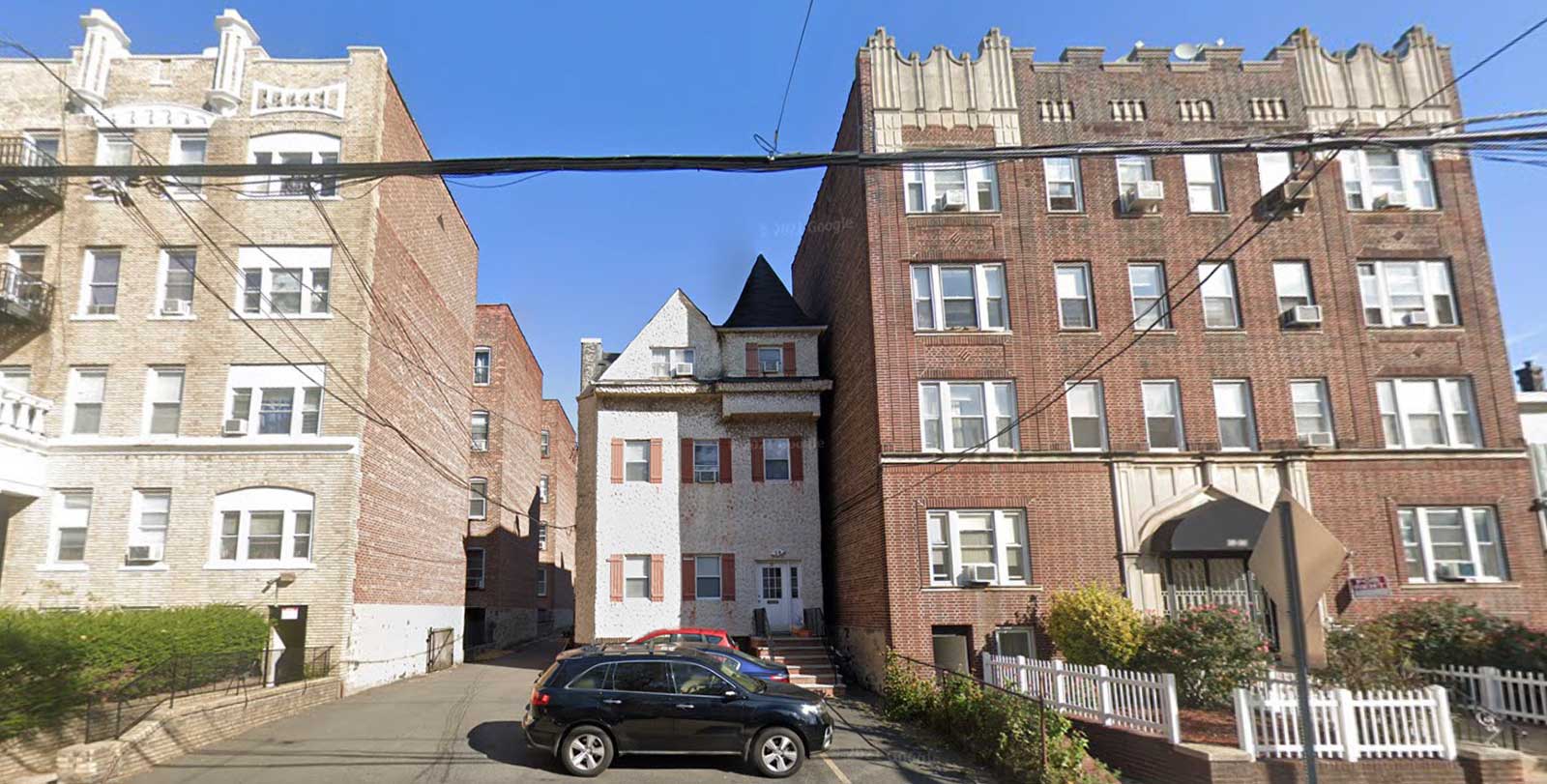
Five years ago, Jersey City’s historic preservation office created a tool to help homeowners designate their homes a landmark. For $150, an applicant could get a “determination of significance,” which was an opinion from a preservationist if their home met the criteria for a landmark. But it soon became wielded “almost exclusively” by real estate prospectors for demolition, according to Maggie O’Neill, the city’s senior preservation specialist.
“Because people want to know ahead of time, before they put a house on the market or purchase a property if they can take it down,” O’Neill told the commission during its August meeting.
But that was all about to change. In 2020, Joseph Berardo, owner of 32 Sherman Place, applied for a determination of significance in hopes of razing the turn-of-the-last-century residence in the Heights.
Today, the two-story home, built in 1900, requires an active imagination to see its lost charm. Swallowed up by two pre-war apartment buildings on either side, the house’s facade has been stuccoed over and the entire front yard is an asphalt driveway. A turret peaks out stubbornly, giving away a hint of its former life.
But O’Neill saw past the alterations — a good preservationist usually can — and concluded that the building was unlikely to receive a demolition permit because of its historical significance. Facades can be repaired. The neighborhood is full of homes that have been restored to their former glories.
Nevertheless, Berardo spent three years fighting the city in court for the right to demolish the building. In the end, he may not have gotten the permission he sought. But he did manage to convince the appellate court to overturn a section of the ordinance. Decisions about demolition must be made by the entire commission — not a lone preservation officer, the court ruled.
“Nothing in the Municipal Land Use Law authorizes historic preservation offices to issue ‘determinations of significance’ dispositive to the issue of whether demolition permits will issue,” the appellate court ruled. “In fact, the MLUL does not contain any mention of HPOs or ‘determinations of significance.’”
Since the ruling, applications for determinations of significance have been removed from the city’s website and pending applications have been refunded, O’Neill said. “The court said they are not legal and we can’t do them anymore,” she said. “The court said that essentially the historic preservation officer can not be making those decisions on their own without the guidance of the HPC.”
Meanwhile, preservationists across New Jersey are beginning to feel their authority challenged. In Newark, the city government evaded the local landmarks commission regarding two major redevelopment projects happening at places listed on the National Register: Harriet Tubman Square and the proposed pedestrian bridge at Newark Penn Station. In Orange, a township attorney cast doubt that the local commission is “actually in existence” at a planning board meeting in September.
It is not unusual for real estate developers to buy properties in historic districts with the intention of demolishing them or disregarding the character of its surroundings. But the preservation community is in trouble when municipal governments conspire to help them do so.


